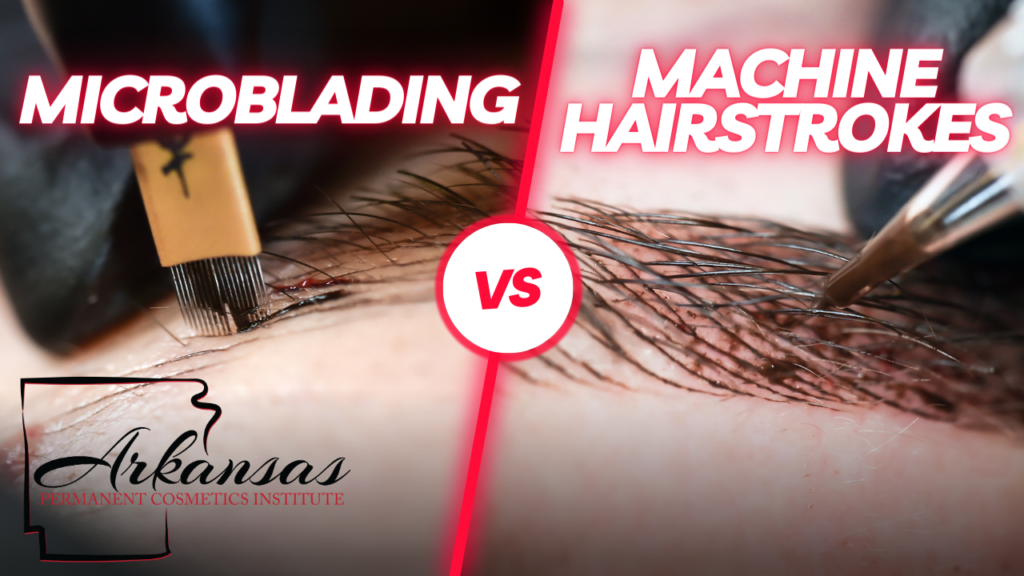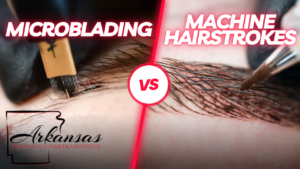The Hidden Dangers of Microblading: Why Machine Hair Strokes Offer a Better Solution
Eyebrow trends have come a long way in recent years, with the focus on achieving fuller, natural-looking brows. One of the most popular methods for achieving this look has been microblading – a semi-permanent tattoo technique that involves the manual insertion of pigment into the skin. While it has gained widespread popularity, there has been increasing concern over the potential dangers of this method. As a result, many people are turning to machine hair strokes as a safer, more effective alternative that provides a more natural-looking result. In this article, we will discuss the hidden dangers of microblading, why machine hair strokes offer a better solution, and how you can make the switch for healthier, more beautiful brows.
Understanding the microblading process
Microblading is a form of cosmetic tattooing that involves the use of a handheld tool with a blade made up of tiny needles. This blade is used to make small, precise cuts in the skin, depositing pigment into the resulting incisions. The result is the appearance of individual hairs, creating the illusion of fuller, more defined brows. Typically, microblading requires multiple sessions for optimal results and can last anywhere from one month to three years, depending on factors such as artists technique, clients skin type, lifestyle, and aftercare.
The hidden dangers of microblading
While the results of microblading can be stunning, there are several risks and potential complications that should be considered before undergoing the procedure.
One of the most significant concerns is scarring. Microblading involves making small incisions in the skin, which can result in scarring from repeatedly cutting the skin. Scarring can also occur if the individual has a predisposition to forming keloids or hypertrophic scars.
Allergic reactions are another potential hazard associated with microblading. Some individuals may be allergic to the pigments used in the procedure, leading to itching, redness, and even blistering in some cases.
Permanent trauma caused by microblading
One of the most significant drawbacks of microblading is the potential for permanent trauma to the skin. The repeated cutting of the skin can weaken its structure, leading to a loss of elasticity and collagen. This can result in a prematurely aged appearance and may even cause the skin to tear more easily. Moreover, the constant penetration of the skin can lead to nerve damage, causing numbness, tingling, or even pain in the affected area. Here’s a good article by another artist explaining in depth the risks.
Introduction to machine hair strokes
Machine hair strokes, also known as digital microblading, nano brows, or machine hairstrokes, is a more advanced and less invasive method of semi-permanent eyebrow enhancement. Instead of using a manual blade, the procedure utilizes a specialized machine and needle cartridge to deposit pigment into the skin. The needle penetrates the skin at a more shallow depth, reducing the risk of scarring and damage to the skin’s structure.
Benefits of machine hair strokes for skin integrity
The primary advantage of machine hair strokes over traditional microblading is the reduced risk of skin damage. Because the needle penetrates the skin at a shallower depth, there is less trauma to the skin’s structure, resulting in a lower risk of scarring and permanent damage. Additionally, the use of a machine allows for more precise control over the depth and angle of the needle, which can lead to more consistent results.
Another benefit of machine hair strokes is that the procedure is less painful than traditional microblading. Many individuals report feeling little to no pain during the process.
Comparing microblading and machine hair strokes: longevity and results
When it comes to longevity and results, machine hair strokes have a clear advantage over microblading. Machine hairstrokes last longer and are much better for the integrity of your skin. The more precise control afforded by the machine allows for more even pigment distribution, resulting in a more natural-looking and longer-lasting result. Additionally, because the procedure is less invasive, the healing process is generally quicker and less prone to complications.
Making the switch: transitioning from microblading to machine hair strokes
If you’ve previously undergone microblading and are considering making the switch to machine hair strokes, it’s essential to consult with a skilled professional who specializes in this technique. They will be able to assess your brows and determine the best course of action for transitioning to the new method. In some cases, it may be necessary to wait for the previous microblading to fade significantly before attempting machine hair strokes. In other cases, removal is the only option before starting over.
Finding a skilled professional for machine hair strokes
When seeking a professional to perform machine hair strokes, it’s crucial to do your research and find someone with the necessary experience and expertise. Look for a technician who is certified in the procedure and has a portfolio of work that demonstrates their skill and attention to detail. Don’t be afraid to ask questions and seek out reviews from previous clients to ensure that you’re making the best decision for your brows.
Conclusion: choosing the best solution for your brows
In conclusion, while microblading has gained popularity as a method for achieving fuller, more defined brows, it’s essential to consider the potential risks and long-term effects on your skin. Machine hair strokes offer a safer, more effective alternative that provides a more natural-looking result while minimizing the risk of scarring and permanent skin damage. If you’re ready to make the switch to a healthier, more beautiful solution for your brows, book with us for your machine hairstrokes.





